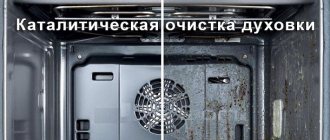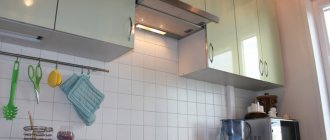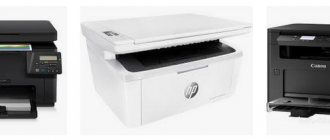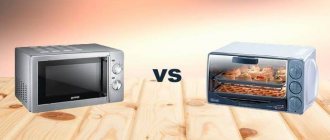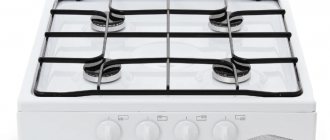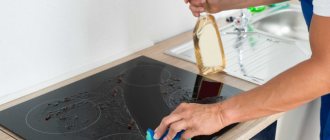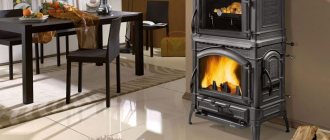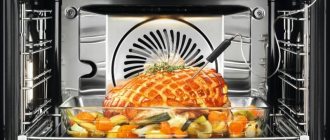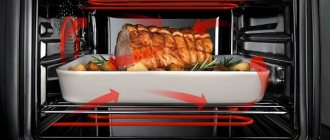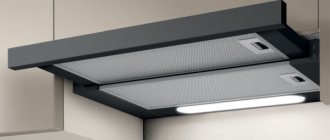During cooking in the oven, various deposits form on its surfaces. Most of all fatty contaminants: it boils, splashes fly in different directions and settle on surfaces. Over time, in high temperatures, the fat hardens and turns brown or black. It is impossible to remove such traces using conventional methods; conventional chemical surface cleaning agents also help little.
How to clean the inside of an oven
The situation becomes especially complicated if cleaning is done rarely, aged deposits turn to stone and are very difficult to remove even mechanically. Although using this method to clean the internal surfaces of ovens is strictly prohibited. What do the most modern technologies offer us, what methods do oven manufacturers use?
Hydrolysis oven cleaning
Oven cleaning methods
To facilitate the cleaning process, modern ovens have special functions; the surface of the oven is cleaned automatically. What features help housewives keep it clean?
Catalytic
Unfortunately, many users do not fully know what catalysis is and how it relates to cleaning the internal surfaces of the oven from hardened contaminants.
Catalytic purification
We were told about catalysts back in school; from those distant times, little has been preserved in our memory. To better understand the processes occurring in the oven, we need to remember the basics of chemistry. Catalysts are special chemicals that significantly speed up reactions. An important property is that they themselves are not consumed and can perform their functions for a long period of time. It is these substances that are present in the surface layer of the coating of some ovens; they feel porous to the touch. The catalyst begins to operate at a temperature of +110°C, but works most effectively when heated to +200°C. In such conditions, fat intensively decomposes, the oven self-cleans during cooking. The housewife can only periodically wipe the surfaces with a clean cloth.
But you need to know that the oven manufacturing technologies that exist today do not allow glass surfaces to be coated with such a substance; accordingly, they cannot be cleaned and require special attention.
An important advantage of the method is that there is no need to use additional electrical energy for cleaning; the process occurs in parallel with cooking.
Removing contaminants after catalytic cleaning of the oven
Pyrolytic
It is considered the most effective way to clean the inside of the oven. It has a special heating mode up to +500°C, at such temperatures all fat burns, after cooling, only the ashes need to be removed.
Removing ash after pyrolytic oven cleaning
The method has many disadvantages, but the main one is that not all materials can withstand such heat.
If you use it for ordinary ovens, then at best they will definitely fail completely. In the worst case, they will catch fire.
Traditional methods
There are a huge number of them, some have proven their effectiveness, but there are also completely useless tips. Each housewife has her own secrets and recipes and considers them the best. Conventional detergents are used, and various exotic ingredients can be added, which most often do not make the process easier.
Folk remedies for cleaning the oven
All traditional methods require a lot of time and effort and do not guarantee complete cleaning of surfaces. It is especially difficult to remove dirt in hard-to-reach places; you have to use toothbrushes and other improvised tools.
Hydrolytic
They occupy average positions in terms of their effectiveness. This is not a fully automatic cleaning and requires quite a lot of manual work. But they are much easier compared to traditional methods. The bottom line is that steam with added chemicals softens hard fat deposits, and this greatly facilitates the process of removing them.
Hydrolysis cleaning
We will consider the technology in more detail below, comparing its actual advantages and disadvantages with the methods described above.
This is only a brief description of existing cleaning methods; to make the right choice, you should find out the details of the technology. For clarity, let’s do this in comparison; this approach allows us to obtain objective data.
Aqua Clean option
It features the ability to clean the oven at low temperatures. To start the function, a temperature of 50 degrees is enough. It is allowed to use both special liquid and ordinary water. The program starts for exactly half an hour. The system automatically switches off and the oven can be opened.
Further actions are similar. First, the surface is thoroughly wiped, and then the oven door is opened slightly and the excess liquid is allowed to evaporate. Close the household appliance after about an hour. If the contamination is severe, it is recommended to use a special product. It removes stubborn stains better.
Comparative technical characteristics of the hydrolysis method
This method has been used for quite a long time, which allows us to give an objective description of its strengths and weaknesses.
Advantages of the hydrolysis method
- The versatility of the method . This is a very important advantage; it makes it possible to use it for absolutely all ovens with the same efficiency, regardless of their type, material of manufacture and available additional functions. During cleaning, heating to only approximately +100°C is required. For example, pyrolytic cleaning occurs at a temperature of +500°C; not all materials used for the production of ovens can withstand it. As for the catalytic method, only special finishing surfaces of internal elements are cleaned this way.
- The hydrolysis method gives ability to clean all internal elements at the same timeO. Stainless steel racks, baking sheets, and baking dishes are loaded into the oven. The steam is equally successful in softening fatty deposits from all surfaces.
Steam cleaning is an affordable and safe solution
- Minimum cost . The cost of cleaning tends to zero; only traditional methods will be cheaper. The catalytic cleaning method is considered very economical; it is performed simultaneously with cooking, while for the hydrolysis method it is necessary to turn on the oven separately. But this is not entirely true for several reasons. Firstly, during any cooking, steam is released, which means that it softens fat deposits, making surfaces much easier to clean immediately after cooling. Secondly, the internal surfaces only need to be heated for 30 minutes, and coolant losses are minimal. Thirdly, the cost of special catalytic coatings can be considered the price of its cleaning; nothing is done for free in our time.
- Safety. This method does not damage important elements of the oven, and injuries are minimized. The only limitation is not to use products containing aggressive chemical compounds. This can cause corrosion of metal surfaces and allergic reactions.
Steam cleaning aqua clean
As you can see, the method has quite a lot of advantages, but, unfortunately, there are also disadvantages.
Flaws
There are only a few of them, they are present in most existing cleaning methods.
- Presence of a strong unpleasant odor. Appears only when special detergents are used for cleaning. To eliminate odor, it is recommended to use deodorants and turn on the hood at maximum output. You need to know that the most modern pyrolytic method produces the most unpleasant odors; under certain conditions, the entire kitchen room can be filled with smoke. Do not use homemade detergents, do not experiment with unknown compositions, and the likelihood of odors will decrease dramatically.
- Duration of the process. Cleaning time depends on several components: the degree of contamination, the chemical characteristics of the liquids used, skill and diligence.
Hydrolysis cleaning is ineffective when it is necessary to remove old or difficult stains
There are cases of mechanical damage to surfaces, but they only appear due to violations of recommendations: metal brushes or acid are used for cleaning, attempts are made to cut off small deposits with sharp objects, etc.
How does hydrolysis work?
The principle of cleaning is to use a hydrolysis liquid, which is water, which is the name of the technology. It is poured into a tray and placed in a pre-cooled oven, which is turned on and preheated. The liquid evaporates and steam is released, softening the fat stuck to the walls of the chamber. The contaminants begin to drain. Such cleaning cannot be called fully automated. Some stubborn grease stains will have to be removed manually, but this will take less time.
Do not assume that such cleaning is ineffective. It is fully justified, but only if used regularly. If you resort to such manipulations at least once or twice a week, caring for your oven will become much easier. The device will be cleaned using steam and the owner will only need to wipe the surface with a damp cloth without additional significant costs. Low temperatures eliminate rapid wear and make cleaning safe.
Features of using electric ovens
Listed above are several universal rules that can significantly reduce the degree of contamination, but electric has its own additional features.
- Never place food containers on the bottom or bottom of the oven. In this place the temperature is maximum, the fat that gets on the surface burns very strongly. In addition, heating elements are not designed to work in confined spaces. They require constant air flow for cooling, otherwise the devices will fail prematurely.
The tray with the dish must be placed in the electric oven so that there is a small distance between the top shelf and the bottom, this is necessary so that the food is baked evenly
- Do not allow fat to come into contact with the surface of the heating elements; they have a very high temperature. Under such conditions, the fat ignites, and during combustion, superheated particles fly in different directions at high speed. They stick very tightly to the oven surfaces and make the cleaning process much more difficult.
Cooking in the oven using foil and a sleeve
- The fan must be constantly on during operation of electrical equipment - a large amount of grease is removed with air flows, which reduces the degree of contamination of surfaces.
Electric ovens with convection function provide forced air circulation
As practice shows, electric ovens need to be cleaned of dirt much more often than gas ovens. This is explained by the fact that these devices have more complex automation and precise electrical fittings; they can only work under certain conditions. The appearance of a thick layer of dirt can cause short circuits and complete breakdown of the oven.
And the last recommendation for all types of ovens is to carefully study the instructions for use and unconditionally follow the manufacturers’ recommendations. Each advice is given only after thorough laboratory and field testing, all of which have been repeatedly confirmed in practice.
